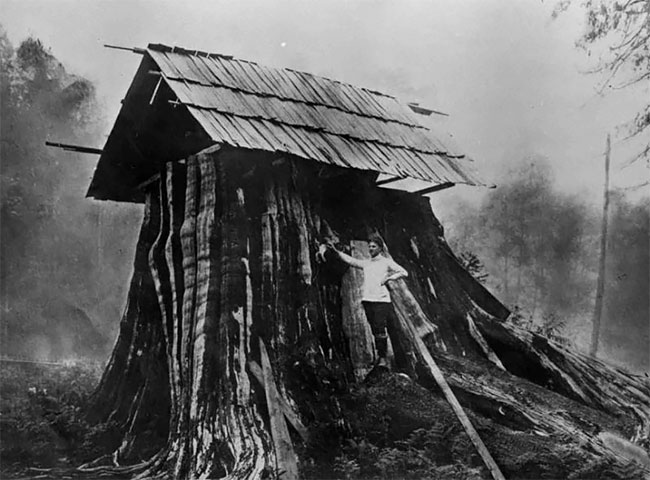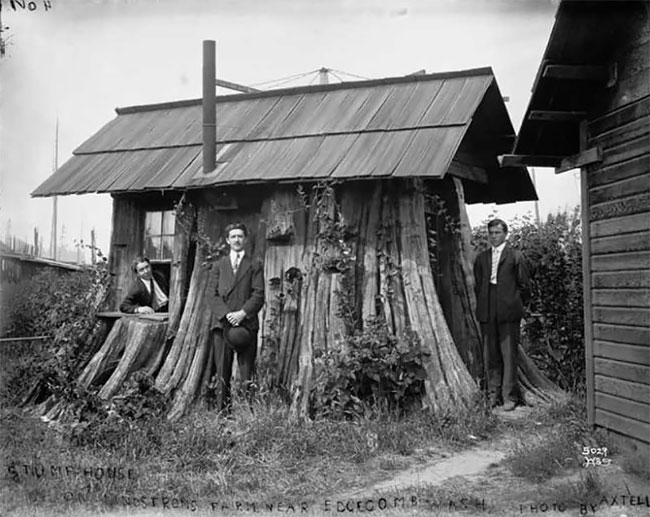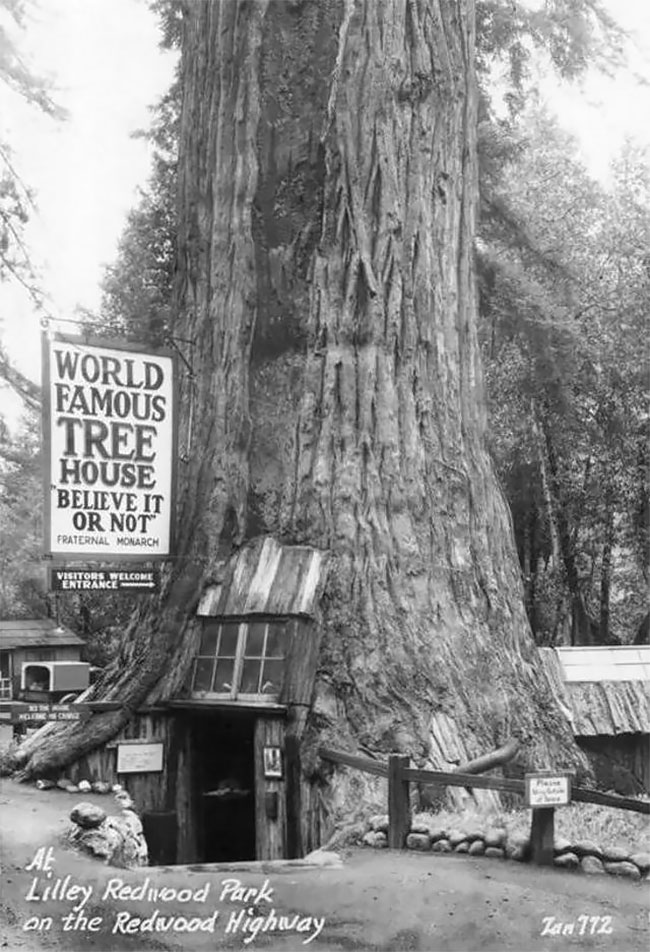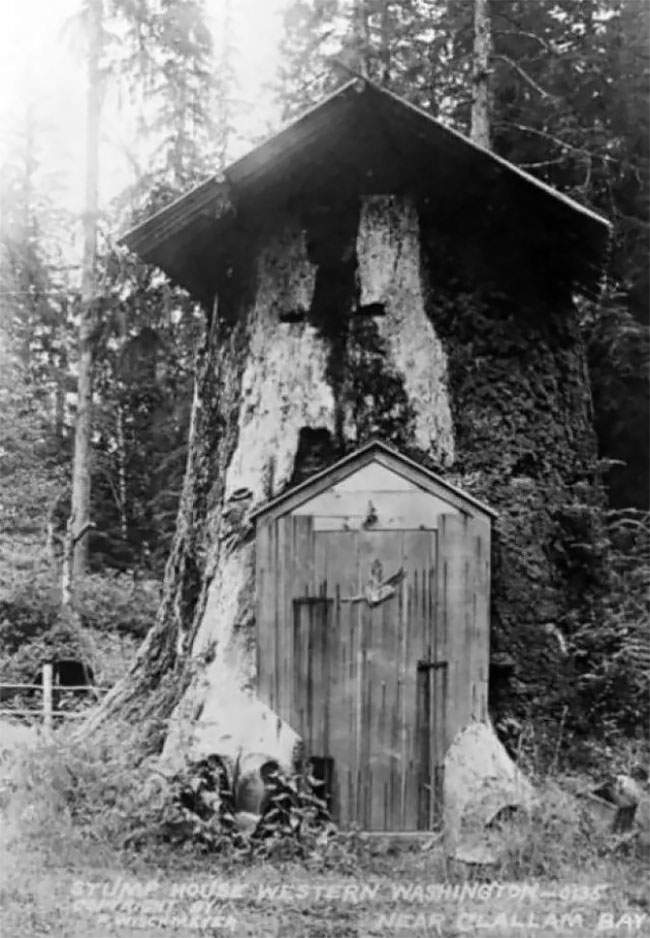Amazing Vintage Photos Of Houses Carved Inside Massive Tree Stumps in America From The Early 20th Century

The giant size of the stump gives a good idea of the size of the old growth trees.
As the first waves of loggers swept over great portions of the Pacific Northwest’s old-growth forests in the second half of the nineteenth century, those men opened up the dark dense woodlands to settlement. And they surely left their mark on the land.
h/t: vintag.es

Extracting massive logs that were skidded away by oxen or floated down rivers to sawmills, the best wood was highly prized. Left behind was a scarred landscape, scrap wood, and stumps. Many stumps. Huge stumps. Stumps that still stood a full 10 feet high but were undesirable as lumber because they tended to swell down toward their base, making the wood-grain uneven.

When subsequent waves of pioneer settlers came on through, they found those old logging sites to be welcome clearings that hinted at possible futures as rich farmland. But, being littered with debris, and those towering stumps, these homesteads presented the challenge of years’ worth of hard labor just to clear – by burning and digging-out stumps – enough proper space to plant orchards or raise crops or livestock.

For select stumps would-be farmers found other uses: A few of the largest were leveled off and fashioned into platforms where “stump dances” were held to the driving tones of fiddles and mandolins. But another use for stumps, perhaps a less frivolous one, would be discovered. By constructing roofs on them, and attaching a door or gate, the stump-based shelters worked fine as storage sheds or chicken houses, or pens to keep pigs and calves safe from prowling predators including raccoons, bobcats, or bears. And sometimes it was people who were the denizens of these stump houses…









